In this Article
Toggle


Are you ready to explore a hidden gem in the Mediterranean? Meet Malta, a small island nation located south of Sicily and north of Africa, and discover why it is a popular tourist destination in Europe.
This article is part of my Wander Like a Local series, where guest writers reveal the best-kept secrets, must-see spots, and unique experiences that only locals know. Discover hidden gems and authentic tips from those who call it home.
Malta offers history, culture, and stunning beauty. Its ancient sites and medieval towns are breathtaking. Plus, its beaches are amazing, with clear waters and perfect spots to relax. The atmosphere is welcoming, locals are friendly, and there’s always something exciting happening.
I moved to Malta over 10 years ago and fell in love with it. Now, I can’t wait to share its beauty with you. In this blog post, I’ll share my tips and experiences, showing you why Malta is a top travel destination.

To help offset the costs of running EverydayWanderer.com, you’ll find affiliate links lightly sprinkled throughout the site. If you choose to make a purchase via one of these links, there’s no additional cost to you, but I’ll earn a teeny tiny commission. You can read all of the legal blah blah blah (as my little niece says) on the full disclosure page.
Where is Malta?
Malta is located between Sicily, Italy (about 60 miles to the north), and Libya (about 180 miles to the south). It is also about 200 miles north of Tunisia, putting Malta in a prime position in the Mediterranean.
Malta is not just one island. It’s an archipelago, a group of islands. The main island, Malta, is the largest of the three. It’s about 17 miles long and 9 miles wide, covering an area of about 95 sq miles. To put that into perspective, it’s about 1.5 times the size of Washington D.C.
Gozo is Malta’s second-largest island, about a quarter of its size. Meanwhile, Comino is the smallest of the three main Maltese islands, covering only 1.4 sq miles. You can explore all of Comino on foot in half a day.
What Language is Spoken in Malta?
Malta has two official languages: Maltese and English. Maltese is a Semitic language that is the most widely spoken language. It is similar to Arabic, but has been heavily influenced by Italian and Sicilian. However, nearly 90% of the Maltese population speaks English. This is largely due to Malta being a Crown Colony of the United Kingdom from the early 19th century until its independence in 1964.
Malta's Climate
Malta has a Mediterranean climate with mild, rainy winters and hot, dry summers.
In winter, an average temperature of 60°F during the day makes Malta a great place for a variety of activities. But summers are much hotter. July and August often see highs of 95°F. Evenings stay warm, at around 75°F.
Malta does not get much rain. It falls from October to early spring. The showers are brief but intense. Luckily, the bad weather quickly clears, and even during the rainy months, you will still enjoy plenty of sunshine.
Malta sees around 300 days of sunshine a year. In winter, it gets five to six hours of sunlight daily. However, this jumps to 12 hours in summer. It’s a paradise for sun-lovers.
I can’t forget to mention the water temperature. Malta’s Mediterranean Sea is clear and perfect for swimming or water sports. In summer, it warms up to 29°C (84°F). This warmth is ideal for hours of swimming, snorkeling, or relaxing in the water.
In winter, the water temperature stays above 16°C (59°F). It might seem chilly, but it’s good for a quick swim if you’re brave. With a wetsuit, you can enjoy water sports like surfing, kayaking, and paddleboarding all year.
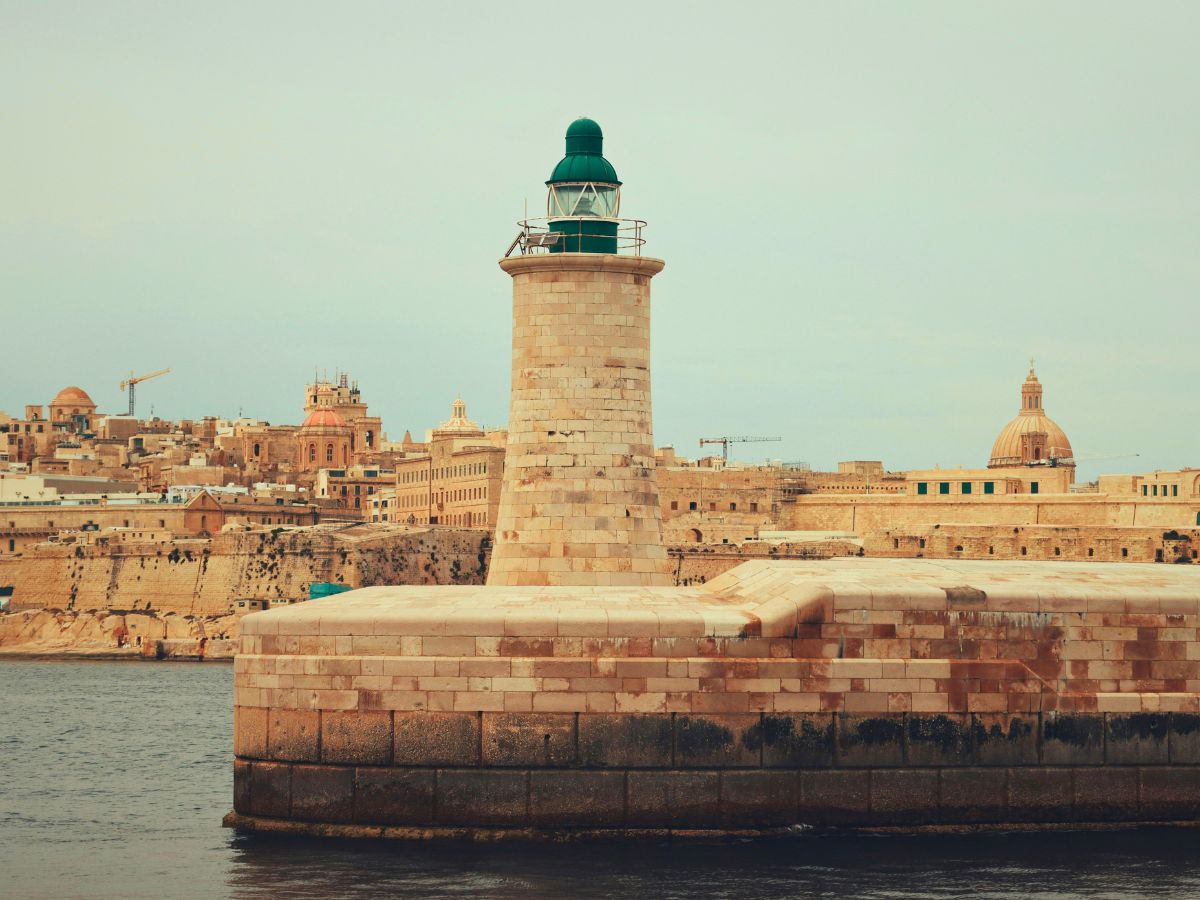
Best Time to Visit Malta
Are you wondering when to visit Malta? I’ll break it down into three: peak season, shoulder season, and off-season.
The peak season is in July and August. You’ll enjoy many sunny days and warm weather, ideal for the beach. Expect crowds, higher prices, and intense heat.
The shoulder season is April to June and September to October. I find this period ideal. The weather is warm but not too hot, and the crowds are smaller. You can enjoy outdoor activities, relax on the beach, and visit historical sites.
The off-season in Malta runs from November to March. During this time, it is often rainy and windy but with mild temperatures. It’s perfect for exploring Maltese culture and history without crowds. You can visit museums, take walking tours, and even enjoy a festive December.
The Importance of Malta's Location in History
Malta’s location in the Mediterranean Sea was important for centuries. It’s a strategic spot that attracted various powers. These included the Phoenicians, Romans, Arabs, Knights of St. John, French, and British.
Each of these foreign rulers left their mark on Malta’s culture, language, and architecture. The Phoenicians and Romans brought their own languages and religions. The Arabs had a huge impact on the Maltese language. The Knights of St. John built fortifications and Valletta, Malta’s capital city. The French and British left their influence on Malta’s legal and educational systems.
Historical Sites and Landmarks
Malta’s rich history spans over 6,000 years. There are so many historical places to explore. Now, here are some must-see spots:
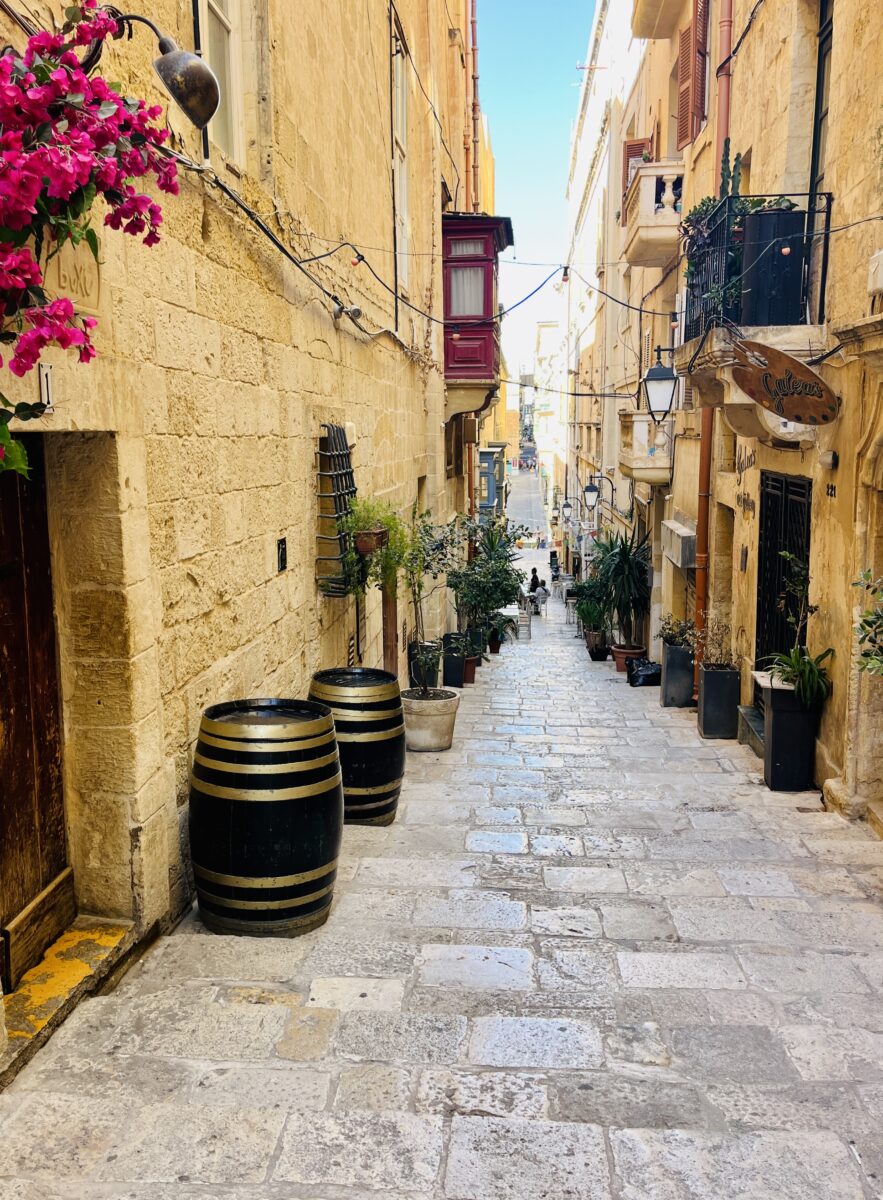
Valletta
Valletta is Malta’s capital and a UNESCO World Heritage Site. It was founded in 1566 by the Knights of St. John. The city offers Baroque architecture, museums, and palaces.
Don’t miss St. John’s Co-Cathedral. You’ll find Caravaggio’s famous piece, “The Beheading of Saint John the Baptist,” there. Also, visit the Grand Master’s Palace. It once housed the Grand Masters of the Knights of Malta. Now, it’s home to the President’s Office and the Maltese Parliament.
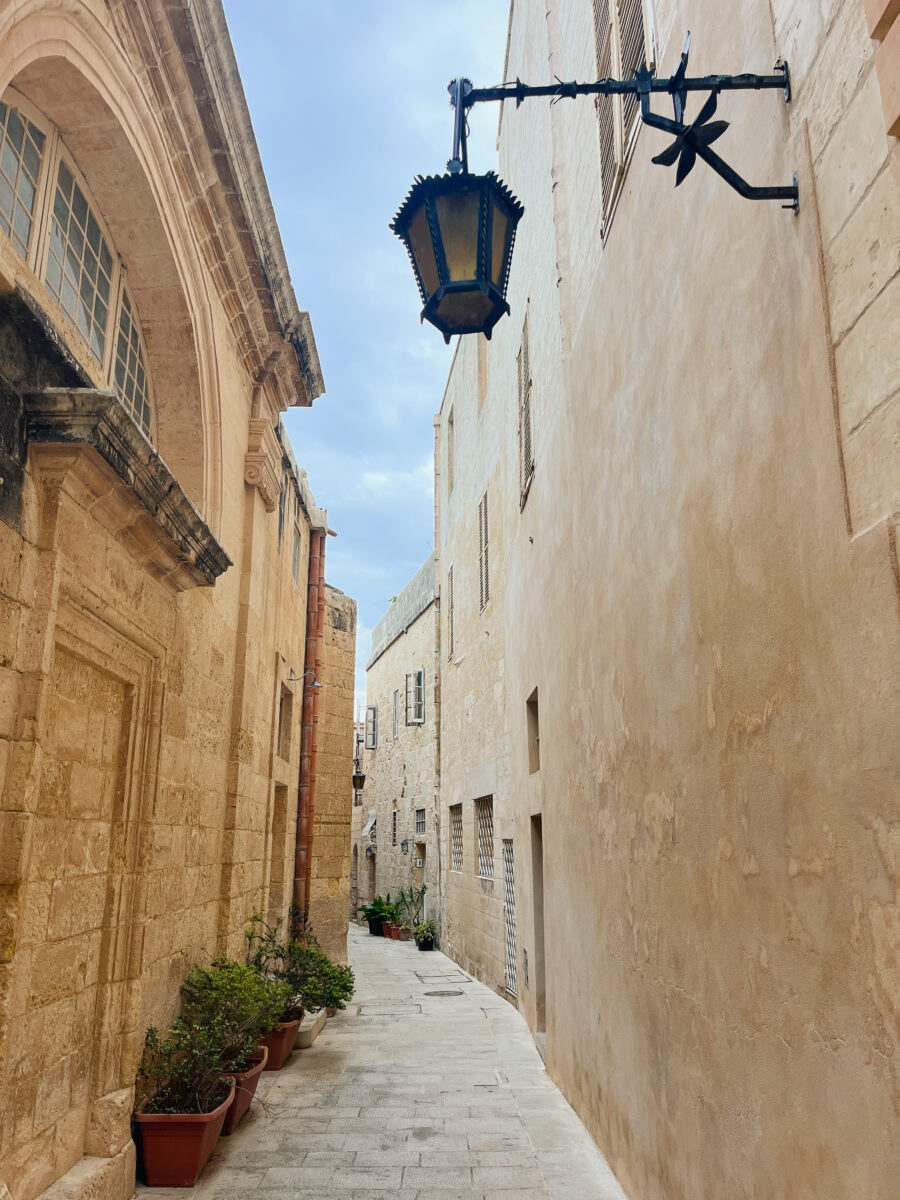
Mdina
Mdina is known as the “Silent City.” It’s an ancient fortified city that dates back to the 8th century BC. Mdina was Malta’s capital until the Knights of St. John arrived in 1530.
Explore narrow streets with medieval and Baroque architecture. Visit St. Paul’s Cathedral, the Mdina Dungeons, and the Natural History Museum. Also, “Game of Thrones” fans might recognize Mdina’s Gate and Pjazza Mesquita. They were filming locations in season one.
The views from the city walls are stunning, especially at sunset. You can see the whole island from there.

Three Cities
The Three Cities are Vittoriosa, Senglea, and Cospicua. They are significant in Malta’s history because the Knights of St. John first settled there in 1530.
Walk through narrow streets to explore each city’s unique character. Visit the Inquisitor’s Palace in Vittoriosa, the Malta Maritime Museum in Birgu, and the Gardjola Gardens in Senglea. The views of the Grand Harbour from the Three Cities are breathtaking.
Megalithic Temples
Malta is home to some of the oldest freestanding structures in the world – the Megalithic Temples. These temples date back to 3600 BC and are older than the pyramids of Egypt and Stonehenge.
The most famous temples are Ggantija in Gozo, Hagar Qim, Mnajdra, and Tarxien in Malta. They are notable for their engineering and intricate carvings of spirals, animals, and goddesses.
Hal Saflieni Hypogeum
The Hal Saflieni Hypogeum is an ancient burial site from 4000 BC. Discovered in 1902, it is now a UNESCO Site. The complex features halls, chambers, and passages carved from the rock. Inside, you will find walls adorned with red ochre paintings of spirals, plants, and animals.
Only 80 visitors can enter the Hypogeum daily. So, it’s crucial to book tickets in advance.

Beaches and Water Activities
The island is small, so it’s easy to reach the sea from anywhere. Malta’s waters are clear and clean. You can swim anywhere along the coast, except in harbor areas.
Malta offers sandy beaches, such as Golden Bay and Mellieha Bay. Both are sandy beaches with shallow waters, ideal for families and water sports.
For a quieter time, visit Ghajn Tuffieha Bay. It’s a sandy beach between rugged cliffs. Moreover, it offers beautiful views and a break from the crowds.
If you like rocky beaches, visit St. Peter’s Pool. It’s a beautiful natural swimming pool near Marsaxlokk. The cliffs there are perfect for jumping. Ghar Lapsi is another lovely rocky beach. The waters are crystal clear, making it great for snorkeling.
Malta is a paradise for water sports lovers. Most beaches rent kayaks and paddleboards so you can explore hidden coves and sea caves. Jet-skiing, parasailing, and water-skiing are also popular. Many operators offer guided tours and rentals.
Malta is also a popular destination for world-class scuba diving, with many dive sites catering to all skill levels. The island’s underwater landscape is filled with caves, reefs, and shipwrecks.
Discover Comino and Gozo: Malta's Sister Islands
Comino and Gozo are small islands in the Maltese archipelago. They are a quick ferry ride from the main island, Malta, yet feel far away.
Comino: A Blue Lagoon Paradise
Comino is an uninhabited island between Malta and Gozo. It’s best known for the Blue Lagoon. This cove features clear turquoise waters and a white sandy beach.
I love spending the day at the Blue Lagoon. I usually take a boat trip from Malta, which takes about twenty minutes. Once I arrive, I spend the day swimming, snorkeling, and soaking up the sun. The water is so clear that you feel like swimming in a pool.
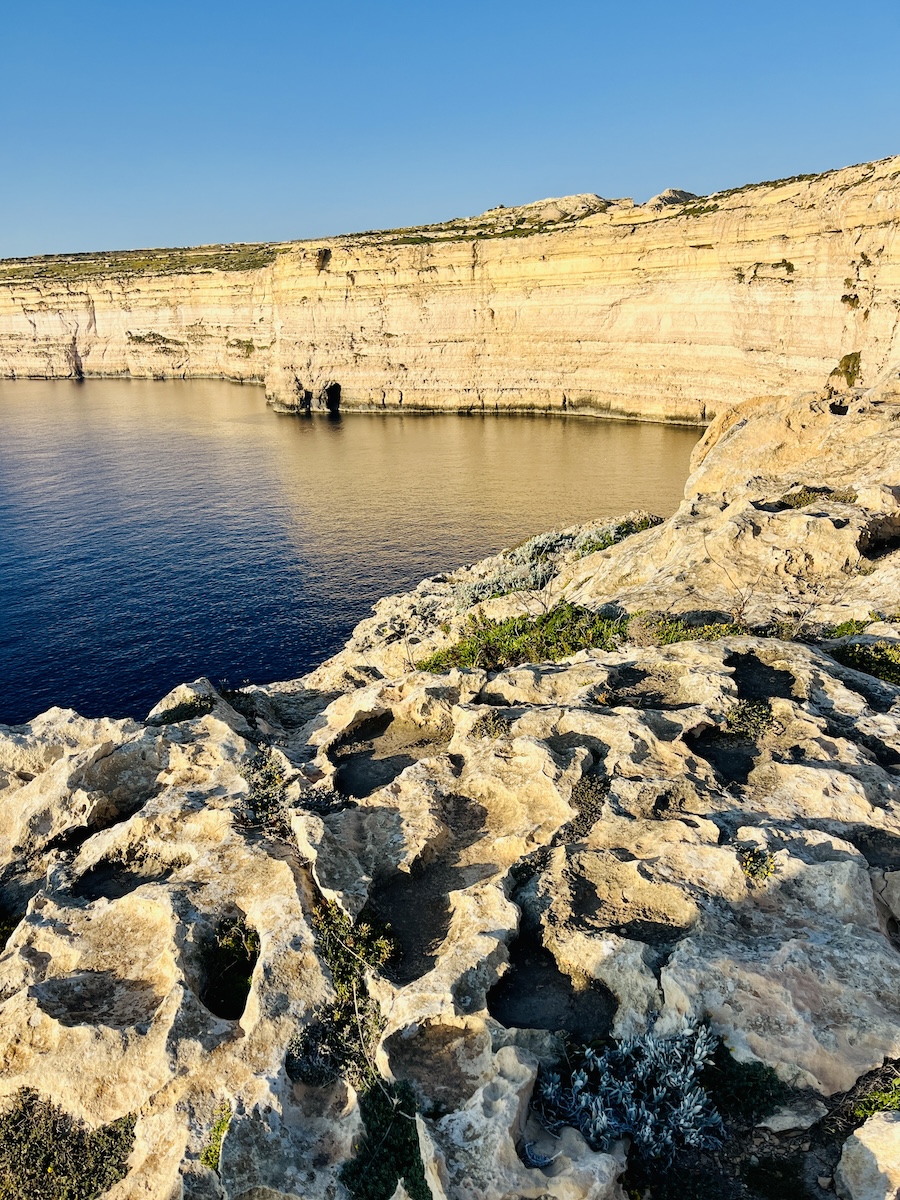
Gozo: A Slower Pace of Life
Gozo is Malta’s second-largest island. It’s quieter and more rural. Also, it offers beautiful beaches, such as Ramla Bay, and nature spots, including Dwejra Bay and Ghasri Valley.
One of my favorite things to do in Gozo is to visit the Citadel in the capital city of Victoria. The Citadel is a fortified city that dates back to the Bronze Age. It offers stunning views of the island and the surrounding sea.
Gozo is home to Ggantija Temples, older than the Egyptian pyramids. Moreover, it’s famous for crafts like lace-making and glass-blowing. You can visit the workshops and watch the artisans in action.
Maltese Food to Try
Maltese cuisine is a delicious mix of Mediterranean flavors. Here are some dishes you must try:
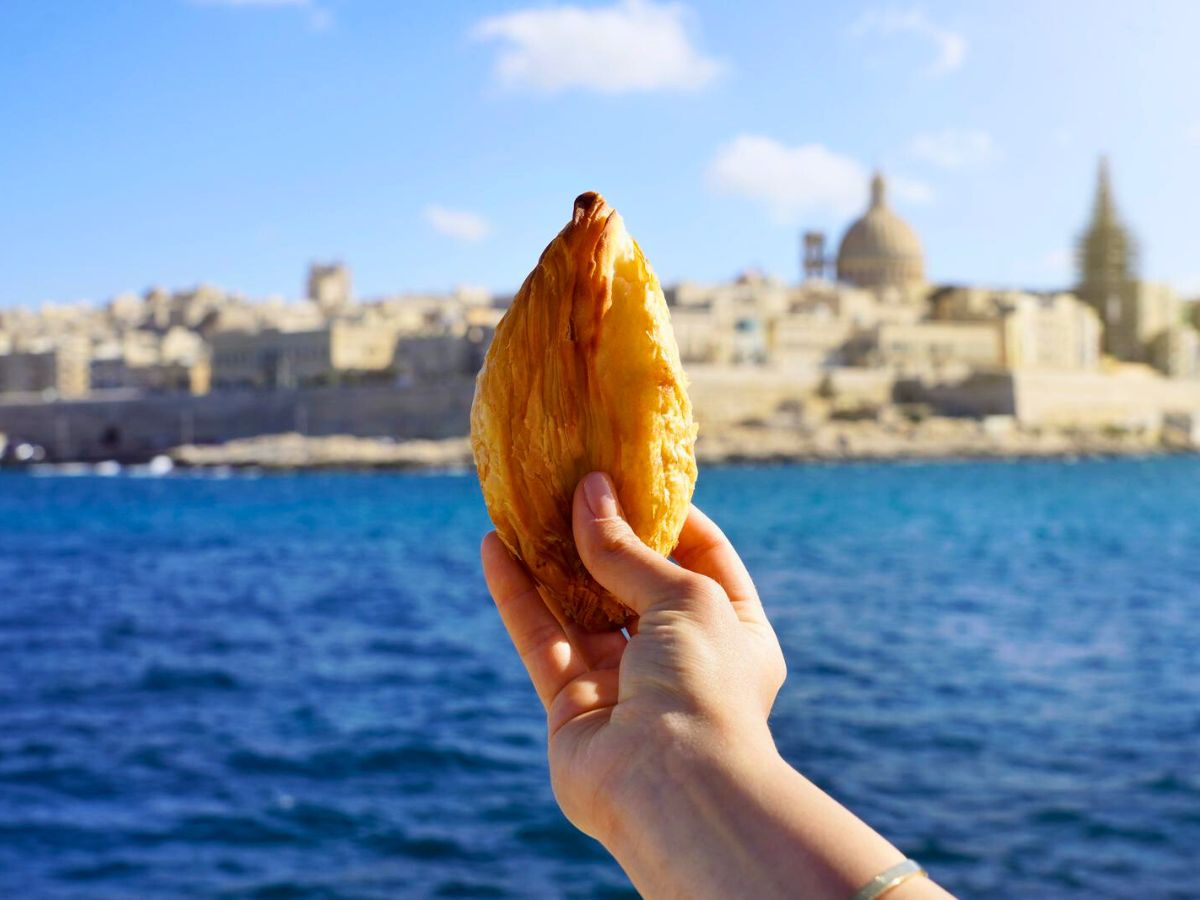
Pastizzi
Pastizzi are traditional Maltese pastries filled with ricotta cheese or mushy peas. They are cheap, tasty, and available everywhere.
Ftira
Ftira is a Maltese sandwich made with sourdough bread, tomatoes, onions, potatoes, and tuna or anchovies. It’s a popular street food.
Rabbit Stew
Rabbit Stew is a national dish of Malta. It’s a hearty stew made with rabbit meat, vegetables, and red wine. It’s usually served with pasta or potatoes.
Imqaret
Imqaret are traditional Maltese date cakes. They are deep-fried and served hot. They are a perfect sweet treat.
Final Thoughts
Where is Malta? It’s in the Mediterranean Sea, south of Sicily and north of Africa. Its central location has made it a key crossroads for many years. Malta is small but full of attractions. It offers stunning beaches, clear waters, ancient history, and a vibrant culture. Everyone can find something to enjoy on this island.
Malta offers more than just history. You can relax on sandy beaches and savor Mediterranean food. This small island nation will win your heart and create lasting memories.
Ready to Go?
Use These Helpful Links to Book Your Trip!
- Find low fares with airfarewatchdog and Skyscanner
- Book your plane ticket with Expedia or Kayak
- Or take the scenic route on an epic road trip in a rental car or an RV from Outdoorsy
- From hotels to private homes, find the perfect accommodation with Hotels.com or Vrbo
- Travel in style with a suitcase, carry-on, backpack, or handbag from eBags
- Save on tickets to attractions, sightseeing tours, and more with CityPASS, Tiqets, and Viator
- Don’t leave home without travel insurance from AXA
- Discover the sights, history, and culture of your destination with an interactive scavenger hunt
- Need something else to plan your perfect trip? Visit my travel resources page for more trusted partners. Happy wandering!
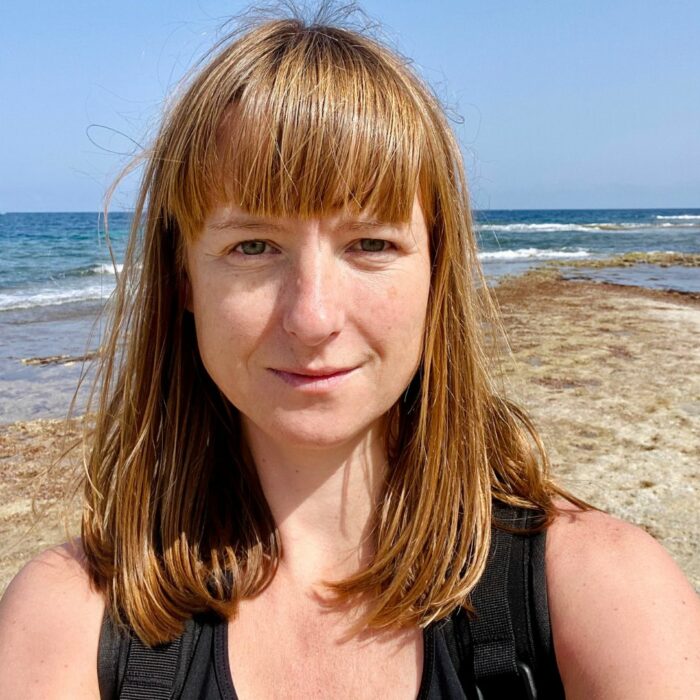
Laura Jasenaite
Laura is the founder and storyteller of Travel2Malta. In her blog, she writes about Malta and shares travel tips, local insights, popular sites, activities, and hidden gems. Follow her on Instagram.
Thank you for sharing!

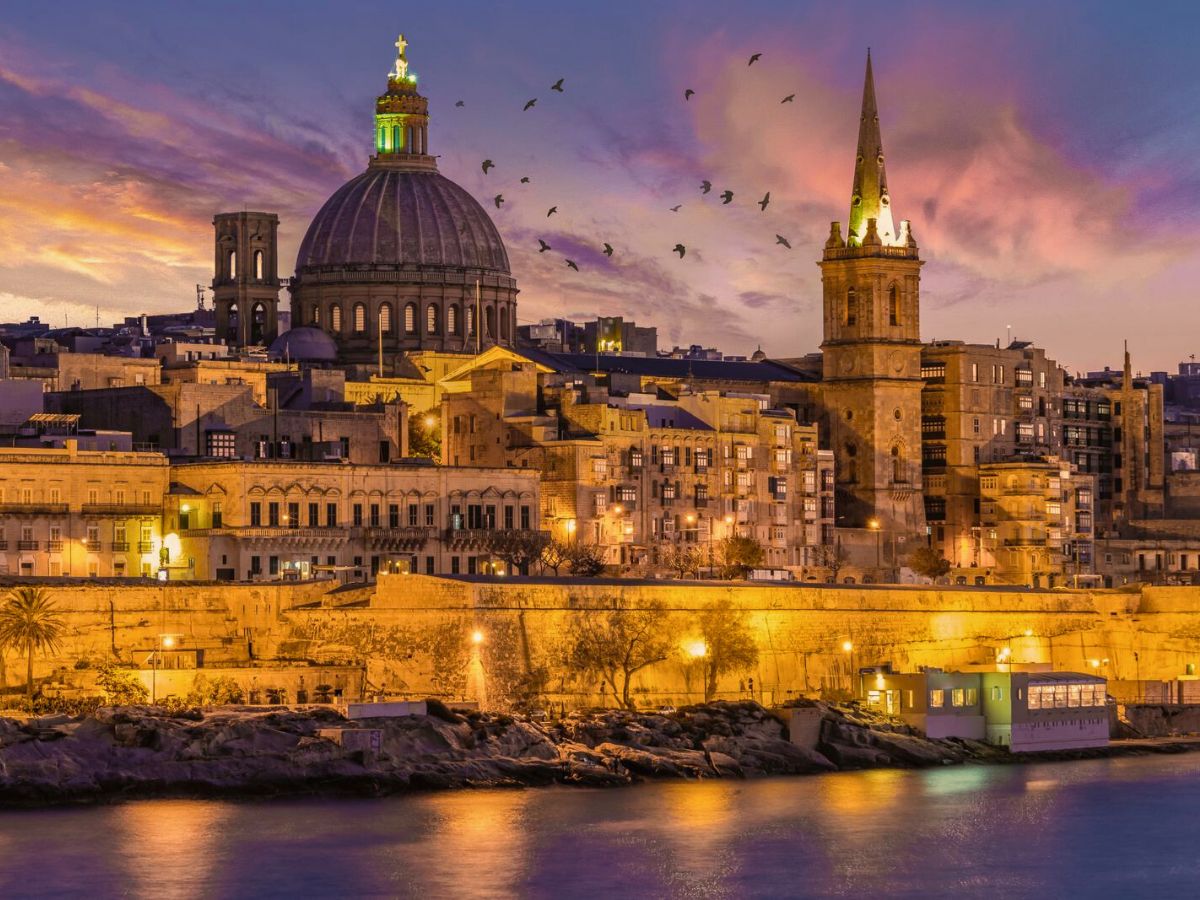


Just returned from Malta after reading your article, and it was an unforgettable experience! Your detailed recommendations and tips made our trip so much more enjoyable. Had the most wonderful time visiting the Blue Lagoon in Comino and it was absolutely breathtaking! Thanks for the great guide!
I’m glad you had a great trip. Malta is a gorgeous country!